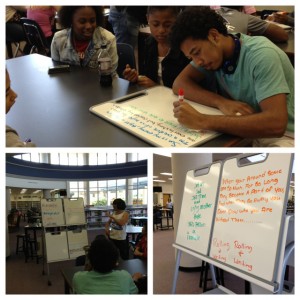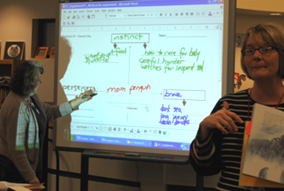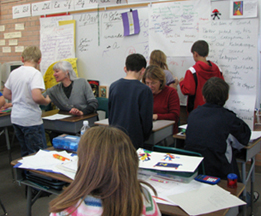On April 5, 2014 Education Quality Standards were adopted by the Legislative Rules Committee of the Vermont Legislature. You may ask, “What does that have to do with me, or collaboration-the theme of this blog?” The bigger question is, “In my state, are there administrative guidelines for establishing school library programs led by certified school librarians that support state education statues?” The answer to this question varies across the country. You may be surprised when you start to do some digging. What’s happening in your neck of the woods? How can you find out?
A year ago, the draft document for Vermont State Board of Education, Education Quality Standards (EQS), omitted any language that pertained to school libraries, or certified professional teacher librarians. That’s when the collaborative team of volunteers from the Vermont School Library Association (VSLA) went into action mode. Last September in this blog, I posted some details about our plan to insert appropriate language into the document. It has taken time to work through the whole process, but we are delighted that our collaborative efforts have made a difference. Now public school districts using the EQS to meet state law requirements have guidelines for school library programs and staffing that are embedded within the big picture of educational programs and services in Vermont. The document itself reinforces a commitment to equitable student centered learning, and is quite progressive.
The takeaway from our experience highlights the power of collaboration, and the need for continued advocacy at many different levels. We have to be able to show and tell the value of a school library program for students. Recently on this blog, we have been focusing on ideas for collaboration, not only with our co-teachers, but also with our principals. The grassroots approach builds influence, acceptance, and support for our programs and our positions.
In Vermont, we have been asking the question, “Does your principal know what you do-really know and understand the complexities of your job?” Heidi Huestis, Professional Concerns Chair of VSLA, and I conducted a short survey of members to get a picture of existing job descriptions and evaluation systems in schools across the state. The results, based on responses from almost 40% of active members have led us to ask more questions. We will use this information and future surveys and other research to plan for advocacy as an organization.
Earlier this month, we presented the findings from the survey at the Dynamic Landscapes Conference at Champlain College in Burlington, Vermont. Our presentation was titled-Under the Radar: Teacher Librarian Job Descriptions and Evaluations, and here’s a link to the slides, and the full survey is included on the resources page. We were especially pleased that Joyce Valenza, one of the keynote speakers at the conference, was there to share some ideas, too.
Job descriptions and evaluations are opportunities for starting conversations with principals and administrators. If you don’t have either, or if they are not updated, you are under the radar- not a good thing! If important stakeholders don’t know what you do, you are wearing an invisibility cloak. As Susan Ballard and others have said, “If you are not at the table, you may be on the menu.”
Resources:
Dynamic Landscapes, May 16, 2014-Under the Radar: Teacher Librarians Job Descriptions and Evaluations https://docs.google.com/presentation/d/10BPsnIZC86WY17Bqodv3YHnEbXnaneZsRvZESkDccoA/edit#slide=id.g33504c028_034
Education Quality Standards, Vermont State Board of Education (Sections on staff and resources, 2121.2, 2121.3 and 2121.4) http://education.vermont.gov/state-board/rules/2000
Image: Microsoft Clipart





